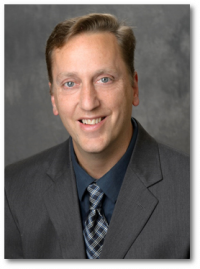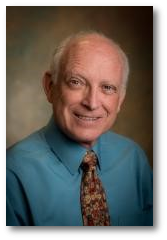Materials After Dark (MAD) Seminars
MAD Seminar Series
Due to COVID-19, seminars may not occur during the 2020-21 academic year.
We look forward to bringing you virtual seminars when possible.

Theory-Guided Road Map for Electro-Optics and the Information Technology
Presented on Friday, May 11, 2018 by Larry Dalton, PhD
Emeritus Professor, Departments of Chemistry & Electrical Engineering, University of Washington
Chipscale integration of electronics and photonics is well recognized as a critical next step in the evolution of information technology (telecommunications, computing, sensing, metrology, imagining, and robotics). Electro-optics is central to such integration. We use multi-scale theoretical methods (quantum & statistical mechanics and beyond) to develop a road map for development of organic electro-optic materials and their integration into silicon photonic, plasmonic, photonic crystal, and meta material devices. This paradigm has already produced a factor of nearly 1000 improvement in electro-optic device performance yielding devices with drive voltage-length performance of 40 V-micrometers, single channel bandwidths of greater than 1 THz, energy efficiency for digital information processing of 1 femtojoule/bit, device footprints of 1 micrometer squared, and insertion loss of less than 2 dB. Such devices now permit gain to be realized in telecommunication systems and wireless signals to be converted directly to fiber optic transmission without the use of electronics. Extraordinary signal linearity has also been achieved. Theory has not only permitted the design of dramatically improved organic electro-optic materials but has also permitted simulation of the performance of materials in devices, elucidating the importance of interfacial interactions. Multi-scale theoretical simulations suggest that another factor of 500 improvement may be possible, permitting not only a revolution in electro-optic technology but also in photodetector technology through exploitation of optical rectification.

Toward Pervasive Nonlinear Optics
Presented on Tuesday, April 3, 2018 by Garth Simpson, PhD
Purdue University
The increasing availability of ultrafast laser sources provides ever broadening access to nontraditional light/matter interactions scaling nonlinearly with incident intensity, applications of which are described for addressing crystal analyses in structural biology and pharmaceutical sciences. In structural biology, determination of high-resolution structures of proteins serve as the foundation upon which rational drug design is built. Following discovery of new drug candidates, controlling or preventing crystallization is an essential step to ensure bioavailability and efficacy. In both applications, the unique symmetry relationships arising in nonlinear optical interactions provide exquisite selectivity for detection and quantification of chiral crystals. Topics to be covered in the presentation will include opportunities and challenges in designing nonlinear optical instrumentation capable of supporting routine, benchtop measurements in applications spanning structural biology, pharmaceutical sciences, and in vivo analyses.

Molecules to Manufacturing: Designing Structures, Products, and Solutions with Polymer Engineering
Presented on Monday, March 5, 2018 by Kyler Knowles, PhD
Western Washington University Alumnus
As materials scientists and engineers, we must understand how molecular structures scale to macroscopic properties of the products we design. Next generation materials must be higher performance, smarter, less costly, and lower impact. In this talk, we will dive into the depths of polymer science and engineering, discussing the molecular origins of a polymer's thermal and mechanical properties, and how they relate to performance of products from separation membranes to aerospace composites.

The Secret Life of Nanoparticles
Presented on Thursday, February 1, 2018 by Don Baer, PhD
Laboratory Fellow & Lead Scientist, Pacific Northwest National Laboratory
Engineered nanoparticles can be designed to have behaviors and properties that are helping to advance treatment of diseases, improve water quality, enable advanced electronics and produce sustainable energy at low costs. However, nano-objects, present fundamental synthesis, characterization and handling challenges that are often ignored or unrecognized by parts of the scientific and technical community. The frequent tendency of such particles to interact with surrounding media and to respond to environmental changes complicates understanding their properties as a function of time in different environments but also presents interesting opportunities. These behaviors impact research reliability and impact product lifetimes. Important issues include knowing about the rate at which they change after synthesis, during storage and processing, and in different media. This presentation will highlight some of the general behaviors of nanoparticles using research on Fe oxide-shell metal-core, ceria, and Ag nanoparticles.
Don Baer is a Laboratory Fellow and a lead scientist in the Environmental Molecular Sciences Laboratory (EMSL) at Pacific Northwest National Laboratory. Most of his research has explored the impact of surfaces and interfaces on material properties including understanding the behaviors of nanoparticles in aqueous and biological media, the surface chemistry and dissolution of oxides and minerals, and the role of interfacial chemistry on battery materials and stress corrosion cracking in metals. He has specialized in adapting surface sensitive tools to address complex problems and to provide quantitative information. Don received a BS in Physics and Carnegie Mellon University and a PhD in physics from Cornell University.
